|
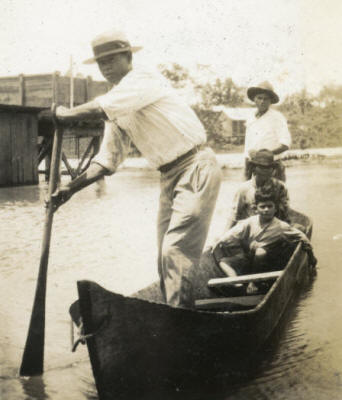 THIS IS THE FIRST PAGE
of documents for the SECOND HALF of 1931
on Nicaragua's Caribbean Coast
region, housing material dated in the 3½ weeks from Wednesday, July 1
to Saturday, July 25.
THIS IS THE FIRST PAGE
of documents for the SECOND HALF of 1931
on Nicaragua's Caribbean Coast
region, housing material dated in the 3½ weeks from Wednesday, July 1
to Saturday, July 25.
The page opens with a
wide-ranging intelligence report by
Jefe Director Gen. Matthews that
helps put the previous months’
events in a broader context (1
July). Matthews dismisses
Sandino’s April offensive as
ill-planned & incompetently
abandoned: "The first phase of
his plan was broken up in the death
of Blandon, and his forces were
routed. ... So much for Sandino's
plans." Col. Wynn applauds 1st
Sgt. Rivas’s initiative in
patrolling the Río Coco from Cape
Gracias to Waspook – notably
described as a 400-mile round trip –
and otherwise describes conditions
on the Coast as “quiet” (see Rivas’s
report of 2 July). Notable too
is Wynn’s summary of “civico” forces
available for “emergency military
service” in Bluefields, Puerto
Cabezas & elsewhere – a volunteer
force that approximates the number
of enlisted Guardia in each place –
as well as his glowing descriptions
of the Guardia’s growth,
professionalism & morale in
Bluefields & elsewhere (4 July).
Then the “quiet” once again explodes in the
mining districts & along the Lower
Coco, as the June-July 1931 EDSN
offensive begins. The rebels
first sweep through Siuna & Wuani
mining districts starting around
June 28, plundering & eliminating
“traitors” before heading back up to
the Coco & concentrating around the
village of Sacklin, now the
epicenter of Adolfo Cockburn &
Abraham Rivera’s considerable
influence & the EDSN’s forward base
on the Coast. It is
instructive to compare the month’s
first Guardia report of “bandit”
activity in the Eastern Area around
Siuna & Wuani (July 11) with
Sandino’s missive to the
expedition’s officers the day before
(July 10) & the fascinating letter
from “FFM” to John Brownson of
Standard Fruit Company in New Orleans
(25 July). Just as intriguing
is reading Sandino’s letter to
“General de Brigada Adolfo Cockburn”
in Sacklin (16 July) in tandem with
US Consul Sheridan Talbott’s
incisive 7-page summary of events up
through July 20. As later
reports make clear, the rebel
offensive is not targeting Rama,
where an uprising by unemployed
workers erupts on 19 July for
reasons wholly unrelated to the EDSN
offensive further north. Col.
Wynn’s report of 22 July provides a
crisp summary of the EDSN raid on
Wuani & Siuna and can be
profitably read in
tandem with FFM’s letter to
Brownson. Further north, Capt.
Inman’s combat report of 21 July
describes his troops’ routing of a
rebel column on July 17 at Wamblan
just upriver from Sacklin. The
page's final report, on conditions
in the Eastern Area by Col. Wynn,
offers a realistic & sober
assessment of many challenges
confronting the counterinsurgency
forces.
In short, another potentially revolutionary moment,
following on the heels of April’s,
has seized much of the northern &
interior parts of the Coast, with
the important exception of Puerto
Cabezas & its environs, which remain
largely untouched. But this
time the Guardia is braced for the
assault.
|
|
PERIOD MAPS
|
|
1894 mosquito
shore

27 MB,
library of congress
|
1920s
Standard Fruit

6.5 mb,
US National archives
|
1928 Rio wanks
Patrol

3 mb, us
national archives
|
1931 Moravian

2.4 mb,
comenius press
|
|
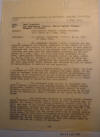
|
1.
1 July 1931.
Intelligence Report, GN-2 Report of 1
June, 1931.
Gen. C. B. Matthews, Jefe
Director GN Managua, to Commanding
General, 2nd Brigade USMC, Managua, p.
1.
"HEADQUARTERS
GUARDIA NACIONAL DE NICARGUA, MANAGUA,
NICARAGUA. ¶ 1 July, 1931. ¶ FROM: Jefe
Director. ¶ TO: The Commanding General,
Second Marine Brigade, Managua,
Nicaragua. ¶ Subject: Intelligence
Report, Guardia Nacional, GN-2 Report of
1 June, 1931. ¶ Reference: (a) Letter,
Comsperon, A8-2(1), to BC, 2MB. 18 June,
1931. ¶ 1. The Commander Special service
Squadron and the Brigade Commander are
already cognizant of the status of the
RAMIRO MOLLA SANZ, the purpose for which
he is supposed to have entered Nicaragua
and result of is alleged visit to
Sandino’s Headquarters, not only from
the information appearing in the GN-2
report of 1 June, 1931, but also from
that contained in the Naval Intelligence
Department personnel report on Sanz,
Serial No. 38031, File No. 108-300, 13
May, 1931, copy of which was sent to
both offices. Information was received
here some time ago that Sanz would visit
Managua and intended to call at Guardia
Headquarters. To date he has not
appeared. ¶ 2. Mr. J. A. Fagot’s father,
Albert Fagot, has been a resident of
Cape Gracias and vicinity for many
years. He has been in business there and
has always enjoyed an excellent
reputation. It is understood he is now
closing out and will leave Nicaragua
permanently. Very little is known of Mr.
J.A. Fagot other than what is stated in
the GN-3 report. ¶ 3. The statement that
several of President Moncada’s former
Generals were joining Sandino is purely
Sandino propaganda. General Escamilla is
at present engaged in road building
projects for the Nicaraguan government
and is, as far as can be determined,
still a friend of and loyal to the
President. ¶ 4. The statement relative
to Sandino having seventy three military
divisions, with at total of five
thousand men, is absurd. The average
bandit group ordinarily numbers from ten
to forty and many of the groups contain
hastily inducted men with their
machetes. Sandino may have established
some sort of a unified organization with
the more important leaders, and I
believe that totaling all the groups
under his so called control would result
in less than 600 bandits scattered
throughout the country. There are
numerous other small groups operating
independently of any Sandino
movement—they are merely bands of
robbers and rob as a means of existence.
-1- ¶ [...]"
|
|
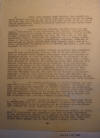
|
2.
1 July 1931.
Intelligence Report, GN-2 Report of 1
June, 1931.
Gen. C. B. Matthews, Jefe
Director GN Managua, to Commanding
General, 2nd Brigade USMC, Managua, p.
2.
"[...] 5. After
each contact with bandits, the guardia
patrols collect as many of the empty
cartridge cases as can be found, and
with very few exceptions the cases have
proven to be of United States
manufacture. There has been no evidence
of any German manufactured ammunition. ¶
6. Sandino has no aeroplane landing
field nor any plane. That subject is too
ridiculous for serious consideration,
although it is quite likely he has
circulated such a false report to many
countries, including our own, and that
many of the unsuspecting people,
absolutely in ignorance of the actual
conditions of the thickly wooded,
mountainous, roadless, sections of the
country in which Sandino must hide
himself like a rat in a hole,
erroneously believing he is a patriot
and martyr, give full credence to the
report. ¶ 7. It is probable Sandino is
getting some financial support from
Bolshevistic sources, but it is not
believed the sums he receives would
finance even minor operations against an
organized force. The bandit raids of
fincas to replenish their food and
clothing supply, from time to time,
seems like a suitable argument to
disprove his claims of being well
supplied from outside sources. An
account of an interview with his
supposed secretary in Mexico on the
subject of money contributions from
Bolshevists stated that the Secretary
vigorously denied that Sandino ever
accepted such offers, excepting on one
occasion when one thousand dollars, was
sent to him through a Nicaraguan
emissary. Further, that upon arrival in
camp, the emissary delivered two hundred
and fifty dollars to Sandino producing
an expense account for the difference of
seven hundred and fifty dollars. ¶ 8.
The remarks pertaining to Adolfo
Cockburn are substantially correct. This
man, a Diputado Suplente (alternate
Deputy), has long been suspected of
crooked dealings and activities with the
bandits. His status as a public official
makes him immune from prosecution.
Unless he is caught red handed in an
overt act and the Nicaraguan Congress
takes some action, it is feared that his
activities will continue without
molestation. ¶ 9. Abraham River is an
east coast bandit jefe closely
associated with the Sandino movement. He
makes his living raiding. There seems to
be no question of an alliance between
Rivera and Cockburn and their “holding
out” on Sandino. ¶ 10. Sandino, or any
other Nicaraguan outlaw, is incapable of
formulating any extensive plan for
military operations. As our standards go
I not believe he ever has any
progressive ideas on the subject. His
operations on the east coast were simple
ones—Blandon was to take Puerto Cabezas,
Rivera Cape ¶ -2- [...]"
|
|
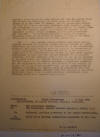
|
3.
1 July 1931.
Intelligence Report, GN-2 Report of 1
June, 1931.
Gen. C. B. Matthews, Jefe
Director GN Managua, to Commanding
General, 2nd Brigade USMC, Managua, p.
3.
"[...] Gracias,
other forces to join Blandon and then
the entire force was to move on
Bluefields. The first phase of his plan
was broken up in the death of Blandon,
and his forces were routed. The loss of
a leader not only interferes with
Sandino’s plans, but apparently causes a
complete abandonment of the entire plan.
So much for Sandino’s plans. As a matter
of interest to the Commander Special
Service Squadron, and for his
information and retention, I am
enclosing Photostat copies of original
documents found on the person of Blandon
at time of his death which proves
conclusively he has been eliminated. ¶
11. The Eastern Area has always been
alert and extremely watchful for
reports, rumors and information of
bandit activities and regardless of the
credibility of the information received,
has taken special pains to place it in
possession of Guardia Headquarters. The
letter was quoted in the report because
part of it corroborated and checked up
with other similar information on hand
here and was not intended to be believed
literally, but was published with a view
to its use in checking up on other
rumors and reports received throughout
the country. The GN-2 report of the
Guardia Nacional is published primarily
for the information and use of the
officers of the Guardia Nacional and it
has often happened that, by the
promulgation of reports, statements and
rumors, which in themselves were
fantastic and unbelievable officers have
been unable to get leads which have
helped them to gather military
information which otherwise would have
escaped their notice. ¶ C.B. MATTHEWS,
Jefe Director. ¶ CONFIDENTIAL Third
Endorsement 6 July 1931 ¶ HEADQUARTERS,
2d MARINE BRIGADE,MANAGUA, NICARAGUA. ¶
From: The Commanding General. ¶ To: The
Commander, Special Service Squadron,
Balboa, C.Z. ¶ 1. Returned, inviting
attention to the second endorsement. ¶
2. There is no further information
available in this connection. ¶ F. L.
BRADMAN"
|
|
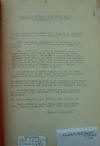
|
1 July 1931
(n.d.)
Memo for Mr. Fernald in Reference to the
Population of Puerto Cabezas and its
Jurisdiction.
William G.
Rupprecht, Puerto Cabezas.
"MEMO FOR MR.
FERNALD IN REFERENCE TO THE ¶
POPULATIONOF PUERTO CABEZAS AND IT’S ¶
JURIDSDICTION. ¶ The following is the
result of my inquiry in reference to the
population of Puerto Cabezas and it’s
jurisdiction: ¶ Could obtain no
information of the Mayor, being told
that he would try to have statistics
ready for me tomorrow. ¶ Señor Pedro
Perez Gallo, a prominent lawyer of
Puerto Cabezas informed me of the
following, being simply a calculation.
He believes that there are approximately
2000 people in Port, including the
American Zone, the village of Bilwi, and
the Company barracones. His estimate of
the Farms district and also the Indian
Communities which are dependent on
Puerto Cabezas, is that of 7000, making
a total of 9,000. ¶ The estimate of
Doctor Mongalo is the following: In Port
2000, and in the Farms district and the
Indian Communities 6,000, making a total
of 8,000. ¶ Dr. Mongalo informed me that
it is practically impossible to attempt
to take census in Puerto Cabezas, due to
the incessant increase and decrease in
the Company’s projects. ¶ He states that
Puerto Cabezas may be considered as a
“moving” city, depending on the
resolutions of the Company. ¶ The Indian
Communities are thirteen(?) and consist
of: ¶ Tuapi, Krukira, Sisin, Yulu, Wawa
Bar, Karata, Licus, Lamlaya, Auyapini,
Kamla, Boom, and Bilwi. ¶ William G.
Rupprecht"
|
|
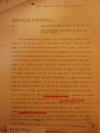
|
1.
2 July 1931.
Patrol Report,
1st Sgt. Pablo Rivas M., GN# 174,
Cabo Gracias a Dios, to Capt. O. A.
Inman, Puerto Cabezas, p. 1.
"Cabo Gracias a
Dios, Julio 2 de 1931.- ¶ Departamento
de Puerto Cabezas ¶ Cuartel General de
Puerto Cabezas ¶ Del: Sargento 1º. Pablo
Rivas M. No. 174 G.N. ¶ Al: Comandante
del Departamento , G.N. Cap. C. A.
INMAN.- ¶ La información al respecto es
la siguiente: Salí en Comisión el 17 de
Junio ppdo. Con dirección hasta Waspook,
dilatando de este lugar cuatro días
hasta dicho lugar, a diez kilómetros de
Waspook me informaron que existía por
allí algunos individuos desorganizados
del combate que hubo en la línea de
Puerto Cabezas, entonces por toda
prevención decidí irme por tierra con
cinco números a Waspook, mientras el
resto de guardias iban sobre el río en
un remolcador, a cuatro millas antes de
llegar a Waspook noté que en una casa
había un individuo armado de un rifle
infume sistema Remington, él cuando nos
divisó noté que era la guardia y no sé
si por decisión quiso ponerse en fuga
echando el parque que poseía de su arma
al río, y luego poniéndose en fuga, los
cinco que patrullábamos disparamos sobre
él y quedando él de esto completamente
muerto. Algunas personas de ese lugar me
informaron que era de apellido
Valenzuela y que él amparado a su arma
les ordenaban cosas que ellos no creían
satisfactorias; pues bien la gente
pacífica de ese lugar le declaraban un
completo bandolero. El arma fue recogida
por mí que es la que le he enviado a
esa, un infume sistema Remington. El
lugar de lo ocurrido es “Suaven” a
CIENTO OCHENTIOCHO millas de este lugar.
Esta es la verdad de todo lo ocurrido.
Es cuanto puedo [....]"
|
|

|
2.
2 July 1931.
Patrol Report,
1st Sgt. Pablo Rivas M., GN# 174,
Cabo Gracias a Dios, to Capt. O. A.
Inman, Puerto Cabezas, p. 2.
"[...] informarle
hasta hoy.- Quedo de Ud. Su muy Atto. S.
S. (signed) Pablo Rivas M.- Sargento 1º.
– No. 174 G. N."
|
|

|
3.
2 July 1931.
Patrol Report,
1st Sgt. Pablo Rivas M., GN# 174,
Cabo Gracias a Dios, to Capt. O. A.
Inman, Puerto Cabezas, p. 3.
"Cape Gracias, 2
July 1931. ¶ Cuartel General.
Departamento de Puerto Cabezas. ¶ From:
First Sergeant Pablo Rivas M., No. 174,
GN. ¶ To: Capt. C. A. Inman, Dep. Comdr.
, G.N. ¶ The following is the
information requested: I cleared on
commission on 17 June 1931 headed to
Waspook, four days travel up to that
place. At ten kilometers from Waspook I
was informed that there were around
these places some individuals who were
scattered from the contact which took
place around Puerto Cabezas for which
reason I decided to go by the trail with
five men to Waspook while the remainder
of the patrol went upon the river in a
tug boat. Four miles before the arrival
I saw a man standing on a house who was
armed with a rifle, model “Smokeless” ,
system Remington. Then the man saw that
the Guardia was approaching he wanted to
escape and threw on the river his
ammunition and fled away, we, the five
of the patrol, fired immediately upon
him and he fell dead. Some natives of
the vicinity informed me later that he
was a man by the name of Valenzuela, who
using his arm (the rifle) directed the
people to do what he wanted, the natives
realized that he was true bandit. I took
the rifle and I sent it to that town, is
a Remington “smokeless” rifle. The scene
of the occurrence is named “Suaven”,
distance 188 miles from this place. This
is the truth on what occurred and all
that I can report. ¶ /a/ Pablo Rivas M.,
¶ 1st Sgt., #174, G.N. [...]"
|
|
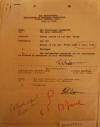
|
4.
2 July 1931.
Patrol Report,
1st Sgt. Pablo Rivas M., GN# 174,
Cabo Gracias a Dios, to Capt. O. A.
Inman, Puerto Cabezas, p. 4.
"[...] 2nd
Endorsement ¶ DEPARMENT OF NORTHERN
BLUEFIELDS ¶ PUERTO CABEZAS, NIC. July
4, 1931. ¶ From: The Department
Commander. ¶ To: The Area Commander. ¶
Subject: Patrol report of 1st. Sgt.
Rivas. Enclosure: One (1) ¶ Report of
1st Sgt. Rivas dated 2 July, 1931. ¶ 1.
Returned. ¶ 2. The information requested
in 1st endorsement is covered by
enclosure of this endorsement. (signed)
O.A. INMAN"
|
|
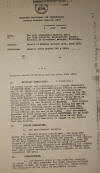
|
1. 4
July 1931.
Record of Events, Eastern Area, June
1931. Col.
C. A. Wynn, Bluefields, to Jefe
Director GN Managua, p. 1.
"4 July, 1931 ¶
From; The Area Commander, Eastern Area.
¶ To: The Jefe Director, Headquarters
Guardia Nacional de Nicaragua, Mangua,
Nicaragua. ¶ Subject: Record of Events,
Eastern Area, June 1931. ¶ Reference:
General Order Number 140 = 1929 ¶ C.
MILITARY OPERATIONS (Continued) the
prompt arrest and confinement of a
bandit character, at NEPTUNE MINE, by
the Noncommissioned officer in charge,
and in the enterprise displayed by the
Noncommissioned officer in charge of
CAPE GRACIA, who, acting on his own
initiative, made a patrol of four
hundred miles, (400 mi), from CAPE
GRACIAS to WASPOOK and return, during
which he killed a fully armed bandit
character who attempted to escape
capture, in the vicinity of WASPOOK.
Upon receipt of information from the
Jefe Director, during the period that a
possible invading bandit column
threatened this coast, the Area
Commander promptly ordered a detachment
embarked on power barge and cleared
BLUEFIELDS for EL GALLO the same date.
EL GALLO’S combined force is now well
prepared to handle any emergency or
engage in any contact that may develop.
¶ D. POLICE OPERATIONS. ¶ 1. See
Departmental Reports. ¶ 2. General
Police Conditions. The Area Commander
has pushed forward the general military
police of the Area to greater activity
during he period. The results of the
Area Commander’s policy in this field
have been the seizure of several hundred
dollars in value of contraband tobacco
which had been smuggled into BLUEFIELDS;
the closing of gambling and unlawful
lottery operations in PUERTO CABEZAS;
and a marked decrease in criminal
offenses of all kinds throughout the
Area. ¶ E. INTELLIGENCE. ¶ 1. The
general state of the territory occupied
is quiet. The Area Commander has taken
adequate military measures to meet any
bandit threat that may arise within the
boundaries of the Area, of reasonable
access. [...]"
|
|
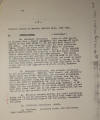
|
2. 4
July 1931.
Record of Events, Eastern Area, June
1931. Col.
C. A. Wynn, Bluefields, to Jefe
Director GN Managua, p. 2.
"[...] -5- ¶
Subject: Record of Events, Eastern Area,
June 1931. ¶ E. INTELLIGENCE.
(continued) ¶ 2. Military situation.
There is some reason to believe that a
bandit encampment and jumping-off point
exists on the COCO RIVER in the
Northeastern limits of the Area. The
Area Commander does not have sufficient
funds, troops and river craft with which
to undertake an expedition against this
bandit base. In the NEPTUNE MINE
vicinity thee are possibly a few
scattered, lurking bandit characters,
spies and sympathizers. The small,
unsupported military garrison at NEPTUNE
MINE is not able to undertake extended
patrol operations, and round up these
lawless elements, but the First Sergeant
in charge of the Post has been given
instructions to keep vigilantly on the
alert, and to take aggressive military
action, whenever possible. ¶ 3. Economic
Situation. The economic situation is not
satisfactory. Poverty, “bad times”, and
abnormally small sales and stock
turn-over, are reported everywhere. The
vessels purchasing their banana cargoes
from the independent planters along the
ESCONDIDO RIVER, have not put in to the
port of BLUEFIELDS for over two months.
The discontinuance of work on the
MANAGUA-RAMA HIGHWAY, at EL RAMA, and
the abandonment of the PEARL LAGOON
CANAL project have both added their sum
to the general depression and the low
point in the economic life of the coast.
¶ 4. Friction between Guardia and Civil
population: None, and it can be
positively reported that there are many
evidences of increased respect for the
Guardia throughout the Area. ¶ 5.
Political Situation: Quiet. ¶ 6.
Weather. Continued rains, and increasing
high temperatures. [...]"
|
|
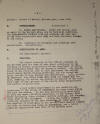
|
3. 4
July 1931.
Record of Events, Eastern Area, June
1931. Col.
C. A. Wynn, Bluefields, to Jefe
Director GN Managua, p. 3.
"[...] -6- ¶
Subject: Record of Events, Eastern Area,
June 1931. ¶ E. INTELLIGENCE.
(Continued) ¶ 7. Roads and Trails. Roads
and trails, such as exist in the Eastern
Area, are in very poor condition. The
RAMA-MANAGUA HIGHWAY work has stopped,
and that part of the road constructed
near RAMA has been seriously damaged by
the rains. ¶ 8. Condition of Telephone
and Telegraph Communications.
Satisfactory. ¶ F. CONFISCATION OF ARMS.
See Departmental Reports. ¶ G. TRAINING.
¶ The recent increase in the officer
strength of the Eastern Area has been of
very great assistance in the training of
troops, particularly in the Department
of Northern Bluefields, where they are
urgently needed. The Guardia posts on
the railroad line in that Department are
rapidly being trained to move quickly
and effectively. Daily patrols by
personnel from KIPLA FARM, MOSS FARM and
TOLEDO WYE are made, covering the entire
one hundred kilometers of the railroad
right of way and most of the nearby
farms headquarters and centers of
population. ¶ A very marked improvement
in the condition and appearance of the
troops in BLUEFIELDS has been noted
during the past few months. It has been
particularly gratifying to note the
smart, military appearance of the
troops, with their spotlessly clean
clothes, uniform carriage, and shining
metal work on web equipment. During the
several command positions occupied by
the Area Commander in other Areas in the
Republic of Nicaragua, he has never seen
more smartly turned-out body of troops
than those in BLUEFIELDS, nor a better
military organization than that of the
Eastern Area. [...]"
|
|
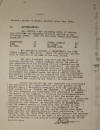
|
4. 4
July 1931.
Record of Events, Eastern Area, June
1931. Col.
C. A. Wynn, Bluefields, to Jefe
Director GN Managua, p. 4.
"[...] -7- ¶
Subject: Record of Events, Eastern Area,
June 1931. ¶ H. MISCELLANEOUS. ¶ (a)
CIVICOS – The following units of civicos
are available for emergency military
service in the following towns. They are
not under formal enlistment contract: =
¶ BLUEFIELDS 67 ¶ PUERTO CABEZAS 50 ¶
RAMA 21 ¶ EL GALLO 17 ¶ LA CRUZ 20 ¶
NEPTUNE MINE 30 ¶ (b) MUNICIPAL GUARDIA:
- BLUEFIELDS, ten (10); PUERTO CABEZAS,
ten, (10). Three (3) Municipal Guardia
will be enlisted in EL RAMA in the near
future. ¶ The Area Commander inspected
the Department of Northern Bluefields,
PUERTO CABEZAS , during the period. The
administration and training of this
organization and the Ninth Company is
being ably conducted. The Department
Commander has employed the services of
officers to good advantage, and a
wholesome spirit of cooperation and
contentment was evident among the entire
officer personnel. The general condition
of the command was very satisfactory,
and in some departments, particularly
clothing and barracks inspection, the
condition was found to be superior. ¶
During the period the Area Commander has
established the publication of a
semi-official military gazette of the
Eastern Area, a bi-monthly newspaper,
with the appropriate name designated as
“VIENTOS DEL ORIENTE”, or “THE EAST
WIND”. The Area Commander has undertaken
this enterprise to augment the morale of
the command, to increase the
inter-departmental and inter-post
understanding, and to knit the entire
Area inter-contented (?), composite
unit, with an end in view of increased
military efficiency of this unusually
large Area. The several newspapers, both
Liberal and Conservative, of BLUEFIELDS,
and the general public at large have
been profuse in compliments and
congratulations, with the appearance of
the first issue of the paper, and the
Guardia troops have shown keen interest
and appreciation, in their publication.
It is believed that the “EAST WIND” will
greatly increase the prestige of the
Guardia Nacional in the eyes of the
public, and produce effective results in
the already increasing efficiency of the
Eastern Area. ¶ (signed) C. A. WYNN"
|
|
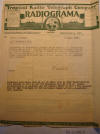
|
4 July 1931.
Radiogram from
Gen. C. B. Matthews, Jefe
Director GN Managua, to Manuel C. y
Bordas, Cabo Gracias a Dios.
"REFERENCIA SU
RADIOGRAMA FECHADA 22 DE JUNIO Y MI
CONTESTACION FECHADA 24 DE JUNIO PRIMARA
TRANSPORTACION DE MANAGUA SERA 14 DE
JULIO Y DESUPES DE ESO 28 DE JULIO. SI
ESTAMOS ENTENDIDOS Y UD. PUEDE DEPOSITAR
EL DINERO ANTES DE 7 DE JULIO, LOS
GUARDIAS SERAN ENVIADOS DE MANAGUA 14 DE
JULIO. AVISEME. C. B. MATTHEWS, JEFE
DIRECTOR. OTTO SALZMAN, By direction."
[English translation included]
|
|
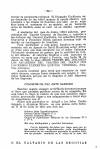
|
10 July
1931.
Letter from Gen.
Augusto C. Sandino, Cuartel
General del EDSNN, to Gen. Carlos
Salgado y Col. Abraham Rivera, Campo de
Operaciones Militares de las Columnas
No. 2 y No. 6, p. 1.
[SOURCE:
Anastasio Somoza García, El
verdadero Sandino, p. 241]
"Señores Jefes Expedicionarios. ¶
General Carlos Salgado P. y Coronel
Abraham Rivera. ¶Campo de Operaciones
Militares de las Columnas No. 2 y No. 6.
¶ Mis muy distinguidos y queridos
hermanos: ¶ Con la intención del deber
que tengo para que todos nuestros Jefes
Expedicionarios estén ampliamente
informados de las condiciones generales
de nuestro Ejército me permito
remitirles en el sobre de la nota del
[...]"
|
|
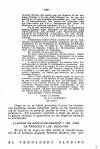
|
10 July
1931.
Letter from Gen.
Augusto C. Sandino, Cuartel
General del EDSNN, to Gen. Carlos
Salgado y Col. Abraham Rivera, Campo de
Operaciones Militares de las Columnas
No. 2 y No. 6, p. 2.
[SOURCE:
Anastasio Somoza García, El
verdadero Sandino, p. 242.]
"[...] Coronel Rivera, dos cartas que
nos llegaron de mi hermano Sócrates y de
don José Idiaquea, en las que nos
participan de una comisión diplomática
que está tratando de entrevistarnos. Les
remito los originales para que sean
leídos por Uds. Y comentados por todos
los Miembros de nuestras columnas No. 2
y No. 6. ¶ En lo que corresponde a este
Jefatura Suprema de nuestro Ejército,
tiene dispuesto de que SEGÚN LAS
PROPUESTAS, ASI SEAN LAS POSIBILIDADES
DE QUE SI VUELVEN A SALIR O NO DE
NUESTROS CAMPAMENTOS LOS MENCIONADOS
DELEGADOS. ¶ Ṹltimamente hemos tenido
noticias de que la mencionada delegación
viene también compuesta de altas
personalidades de los Gobiernos de
Guatemala, El Salvador y Honduras, y aún
se habla de un parlamento entre México y
los Estados Unidos de Norteamérica
relacionado con los asuntos de
Nicaragua. ¶ Ya veremos en qué para la
cosa. ¶ En estos días de tremendas
lluvias hemos estado “legajeando”
importantísimos documentos de la
actuación política y militar de nuestro
ejército, para tratar de escribir un
libro oportunamente. ¶ Y como he dicho,
queriendo que nuestro Jefes
Expedicionarios se sientan lo
debidamente orientados, hoy me permito
envíar dos legajos de esos documentos,
para que uno quede en poder del Coronel
Abraham Rivera y lo estudie y el otro
para que sea remitido al General Adolfo
Cockburn, en Saclin, por conducto del
Coronel Abraham Rivera. ¶ Para el Gral.
Salgado no remito legajo de esos
documentos porque el los recibirá de mis
propias manos, y en esta vez mis
propósito es que los hermanos Gral.
Cockburn y el Coronel Rivera, se
orienten mejor pues el General Salgado
tiene perfecto conocimiento de los
documentos acumulados en el mencionado
legajo. Sin embargo, pondré siempre
personalmente un legajo en sus manos
para su archivo personal. ¶ Sinceramente
vuestro hermano. ¶ Patria y Libertad ¶
(f) A.C. SANDINO. (Un sello)"
|
|
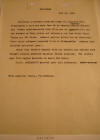
|
11 July
1931.
Radiogram from US
Consul, Puerto Cabezas, to Jefe
Director GN Managua.
"According to
advises received today via schooner from
Prinzapolka a raid was made June 28 by
Generals Caracas Salgado and Rivera
simultaneously with fifty men on
Siumaastricht [Siuna?] and one hundred
on Wani [Wuani] coming and returning via
Sasa River Casas Viejos and Uli River.
Several persons killed but no Americans.
About forty refugees reported to be in
Prinzapolka. Bonanza Mine believed
untouched. Rumor that Sandino himself
with six hundred men enroute here
thought locally probably baseless though
possible. The journey here from region
possible in about two weeks. U.S.S.
SACRAMENTO arrived here this afternoon."
|
|
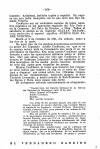
|
16 July
1931.
Letter from Gen.
Augusto C. Sandino, Cuartel
General del EDSNN, to Señor General de
Brigada Adolfo Cockburn, Sacklin, p. 1. [SOURCE:
Anastasio Somoza García, El
verdadero Sandino, p. 276.]
"Cuartel Gral. Del Ejército Defensor de
la Soberanía Nacional de Nicaragua,
Julio 16 de 1931. ¶Señor General de
Brigada. Adolfo Cockburn, Sacklin. ¶Muy
querido hermano: ¶Con fecha 20 del
próximo pasado mes, salió de ese Cuartel
General de nuestro Ejército, una
Comisión Militar al mando de los
hermanos Coronel Perfecto Chavarría y
Capitán Francisco Ellis, para ponerse a
las órdenes de Ud. En ese Litoral
Atlántico. ¶Hoy me permito el gusto de
remitir a Ud. Un legajo de importantes
documentos y escritos pertenecientes a
nuestro Ejército, para que Ud., en su
carácter de General de nuestro Ejército,
se imponga debidamente del ideal que
perseguimos y nuestros esfuerzos por
alcanzar la coronación de nuestro
triunfo. ¶ También Uds. Pueden hacer que
se publique ese trabajo, en la prensa
inglesa y de Bluefields, después de
algún tiempo que ya la publicación de
los mencionados documentos, no sean una
revelación de planes y proyec- [...]"
|
|
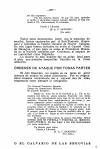
|
16 July
1931.
Letter from Gen.
Augusto C. Sandino, Cuartel
General del EDSNN, to Señor General de
Brigada Adolfo Cockburn, Sacklin, p. 2. [SOURCE:
Anastasio Somoza García, El
verdadero Sandino, p. 277.]
"[...] -tos allí expuestos. ¶Con mis
mejores deseos de que Ud. Sepa apreciar
el cariño y sinceridad con que nuestro
Ejército le esta tratando a Ud.,
sinceramente su hermano, ¶Patria y
Libertad. ¶(f) A.C. SANDINO.” (Un
sello)"
|
|
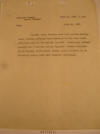
|
18 July 1931
(1600).
Telegram from
American Consul, Puerto Cabezas
to Sec. State Henry Stimson, Washington
D.C.
"Captain Inman
reports that with reconnoitering score
Guardia ambushed near Kisalaya on the
Coco River afternoon 17th by 40 bandits.
Nicaraguan officer wounded and 3 bandits
killed. Leader believed to be Caracas;
larger group believed to be following
coming here Cape Gracias."
|
|
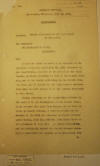
|
1.
21 July 1931.
Confidential Report on Bandit Activities
on the East Coast of Nicaragua,
Sheridan Talbott,
US Consul, Bluefields, to Sec. State
Henry Stimson, Washington D.C., p. 1.
"I have the honor
to refer to my telegram to the Legation
at Managua dated July 30 [sic;
NOTE: this must be a typographical
error, since this message is dated 21
July & the contents make clear that
Talbott is describing events up to July
20] ... relative to the attack on the
small Guardia garrison stationed at Rama
by discharged workers, and to the bandit
activities in the Puerto Cabezas area,
and to submit for the Department's
information more detailed advice as to
the general situation on this Coast.
¶ Taking advantage of the
opportunity offered by the arrival of
two hydroplanes of the Marine Corps,
which reached this port from Managua on
the 16th en route to Puerto Cabezas, I
left Bluefields on the morning of the
17th and remained in Puerto Cabezas
until Monday, July 20, arriving here
about three in the afternoon of that
day. As Consul Fernald has not yet
officially opened the Puerto Cabezas
consulate I considered the journey as an
inspection trip ¶ in ..."
|
|
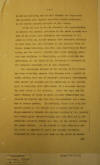
|
2.
21 July 1931.
Confidential Report on Bandit Activities
on the East Coast of Nicaragua,
Sheridan Talbott,
US Consul, Bluefields, to Sec. State
Henry Stimson, Washington D.C., p. 2.
"... in my own
district, but he will furnish the
Department and Legation with reports
regarding bandit activities in the
Puerto Cabezas district in the future.
¶ During my stay in Puerto Cabezas
I had opportunities to discuss the
general situation in the north eastern
section of Nicaragua with officials and
employees of the American fruit and
lumber company with extensive holdings
in that area, and with officers in the
American Navy and Marine Corps
(Guardia), all with long experience in
Nicaragua, and the advice gathered from
these sources, officers and civilians in
Bluefields as well as my own
observations, is the basis of the
information contained in the telegram
mentioned and in this despatch. ¶
The commanding officer of the Guardia in
Bluefields has been receiving reports
from Managua over a period of weeks
stating that one of Sandino's principal
lieutenants with around two hundred men
was operating in the eastern part of
Matagalpa with indications of a movement
towards the east coast of the country.
About ten days ago the small village of
Wauni in north western Prinzapolka was
visited by bandits and four men were
murdered and a number of stores looted.
In addition, there have been repeated
rumors to the effect that a general
movement of these marauders towards the
eastern section of the country was
taking place notwithstanding the fact
that it is the generally accepted theory
that they do not operate during the
rainy season. As the result of
this situation and the fight at Logtown
in April the Guardia officials stationed
in this area have been on the alert to
detect ¶ any ..."
|
|
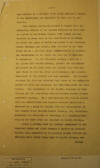
|
3.
21 July 1931.
Confidential Report on Bandit Activities
on the East Coast of Nicaragua,
Sheridan Talbott,
US Consul, Bluefields, to Sec. State
Henry Stimson, Washington D.C., p. 3.
"... any evidence
of a movement which might indicate a
threat to the individuals and interests
in this part of the country. ¶
Upon arrival in Puerto Cabezas I learned
that the commanding officer of the
Guardia Nacional in that area (a captain
in the Marine Corps), with twenty men
had traveled by motor boat up the Coco
River in an effort to detect any signs
of bandit movements in the district
around Kisalaya and Saklin, both
situated on the Coco River and in a
district where concentrations of bandits
for expeditions to the south and east
may be expected to originate. On
the following morning - July 18 - the
planes left Puerto Cabezas, located the
detachment of Guardia on the Coco River
and learned that they had been fored on
from the shore near Kisalaya, and a
native lieutenant of the Guardia had
been wounded. The Guardia returned
the fire and reported that three of the
estimated number of forty men composing
the attacking party had been killed.
The detachment of the Guardia returned
to Cape Gracias and the commanding
officer reached Puerto Cabezas yesterday
morning. In a conversation with
him he stated that his observations and
reports received indicated a movement of
a group of bandidts from the
neighborhood of the Waspook River
towards Puerto Cabezas. He,
therefore, abandoned his intention of
returning on a reconnaissance trip up
the Coco River and remained in Puerto
Cabezas. ¶ During a journey
over the railway maintained by the
American lumber and fruit company I
visited an isolated Guardia post
commanded by an American Marine officer
and situated about fifty miles west of
Puerto Cabezas, and ¶ during
..."
|
|
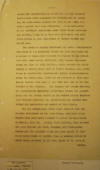
|
4.
21 July 1931.
Confidential Report on Bandit Activities
on the East Coast of Nicaragua,
Sheridan Talbott,
US Consul, Bluefields, to Sec. State
Henry Stimson, Washington D.C., p. 4.
"... during our
conversation he stated that he had
received information which suggested the
advisability of visiting the surrounding
country and that he was going out with a
patrol that same afternoon. As an
indication of the difficult conditions
under which these Americans are serving,
I may state that this officer is the
only white person in this detachment of
twenty Guardia enlisted men. ¶
The American company mentioned has made
a considerable reduction in its
personnel within the last few weeks and
a number of rumors have reached
Bluefields to the effect that they were
having difficulty with former employees
along the line of their railway, which
extends for about eighty or ninety miles
west of Puerto Cabezas, and, while there
is undoubtedly considerable latent
dissatisfaction among the unemployed,
there was no evidence of this during my
journey over most of the line with one
of the officers of the company.
The company has ceased entirely its
considerable lumbering activities during
the present year, and the banana market
in the United States together with
disease affecting the plantations has
greatly curtailed its production and
export of this fruit. ¶ The
two aeroplanes, after their contact with
the Guardia detachment on the Coco
River, continued their observation work
until ordered to return to Bluefields on
Monday, July 20. During their
flights, they covered the area between
the Coco, Waspook, and Prinzapolka
Rivers and the Atlantic Coast and were
unable to discover other signs of
bandits than an unusual number of small
boats anchored in the Coco River at the
town of ¶ Saklin, ..."
|
|
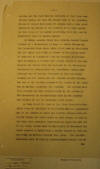
|
5.
21 July 1931.
Confidential Report on Bandit Activities
on the East Coast of Nicaragua,
Sheridan Talbott,
US Consul, Bluefields, to Sec. State
Henry Stimson, Washington D.C., p. 5.
"... Saklin, and
the fact that no residents of that town
were visible during the time the planes
were in the vicinity. It may be stated
that while the planes have a very great
effect on the morale of the bandits, it
is very seldom in this stage of the
bandit activities that they can be
identified when these planes appear.
¶ On Monday morning (July 20),
reports reached Puerto Cabezas of a
disturbance in Rama - a small village on
the Escondido River about sixty miles
west of Bluefields and the point from
which an attack on Bluefields might be
expected to originate - and on reaching
Bluefields that afternoon, I learned
that around thirty of the one hundred
and thirty five men employed by the
Nicaraguan Government in constructing
the Rama-Boaco highway had attacked dthe
20 Guardia stationed in Rama on Sunday
evening and had killed one and wounded
several others. The men of the
Guardia accounted for twelve of the
workmen in killed, captured, and
wounded. It appears that this
trouble had been brought about by the
action of the Government in
discontinuing work on the highway and
failing to pay the laborers their wages.
¶ As Rama is at the head of the
river transportation route from the
interior to Bluefields and was
apparently one of the points at which
the bandit efforts were directed during
the April raids on this coast, as well
as the fact that Sandino's lieutenant is
operating not far to the west, caused
many in Bluefields to interpret the
early reports as indicating a bandit
attack on Rama and possibly an advance
towards this port. The Guardia
commander sent to Rama as reinforcements
around ten of ¶ the ..."
|
|
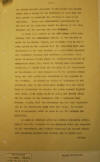
|
6.
21 July 1931.
Confidential Report on Bandit Activities
on the East Coast of Nicaragua,
Sheridan Talbott,
US Consul, Bluefields, to Sec. State
Henry Stimson, Washington D.C., p. 6.
|
|
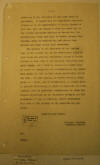
|
7.
21 July 1931.
Confidential Report on Bandit Activities
on the East Coast of Nicaragua,
Sheridan Talbott,
US Consul, Bluefields, to Sec. State
Henry Stimson, Washington D.C., p. 7.
|
|
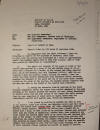
|
1.
21 July 1931.
Report of Contact at Rama, District
Commander Capt.
Fred Riewe, Rama, District of
Siquia, to Col. C. A. Wynn, Bluefields,
p. 1.
"DISTRICT OF
SIQUIA ¶ GUARDIA NACIONAL DE NICARAGUA ¶
RAMA, NICARAGUA 21 July, 1931 ¶ From:
The District Commander. ¶ To: The Area
Commander, Eastern Area of Nicaragua. ¶
Via: The Department Commander,
Department of Southern Bluefields. ¶
Subject: Report of contact at Rama. ¶
Reference: General Order No. 109 dated
10 September 1929. ¶ 1. In compliance
with the above reference I have the
following to report: At the approach of
darkness, about 1930 19 July, 1931 the
cuartel was surrounded by a force of
approximately twenty five bandits (about
half of them were locally) some of them
were positively identified as
“Sandinistas”. ¶ 2. The sentry and
Sergeant of the guard in front of the
cuartel were greeted by a group of two
and another group of six or seven with a
request for a match. As the request was
being complied with, one of the bandits,
(Sup Jefe Ildefonso LEJARZA,) with the
cry “Sandino”! drew two pistols, fired,
killing the sentry. (Raso Usa OLIVA).
The other bandits immediately drew
concealed knives seriously wounding the
Sergeant of the guard and two of the
three other unarmed Guardia on the porch
of the cuartel. The wounded Guardia
together with two more who were in the
inside of the cuartel then retreated. ¶
3. I, seeing the encounter from my
position in the third building
diagonally across the square from
cuartel advanced to the next building as
the bandits entered the cuartel and were
joined immediately by another group from
the west corner of the square and still
another from the rear comprised of about
seven or eight, these took the
Commandancia cuartel with machine gun,
rifles and ammunition. 4. I was joined
in position by guardia who were on duty
in the streets, armed with rifles, one
Municipal police and four other guardia
and opened fire. Private Boik, off duty,
unknowingly entered cuartel, seeing
bandits, snatched two rifles from a
bandit who he felled with a kick. He
then joined me in position. Guardia soon
exhausted their only 100 rounds of
ammunition. Private Boik, then
voluntarily and alone rushed the cuartel
under cover of my rifle fire and
returned with case of 500 rounds. In
about twenty minutes firing from
position this ammunition was almost
exhausted. The bandits then pushed the
machine gun into position to second
story porch. I gave orders to take the
cuartel. Bandits then retreated in rout
over the rear porch dropping all but two
of their captured rifles, leaving the
guardia in charge of cuartel. [...]"
|
|
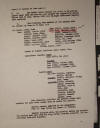
|
2.
21 July 1931.
Report of Contact at Rama, District
Commander Capt.
Fred Riewe, Rama, District of
Siquia, to Col. C. A. Wynn, Bluefields,
p. 2.
"[...] report of
contact at Rama page #2. ¶ 5.- One
bandit badly wounded was picked up by
guardia patrol about 2300 and another
also wounded was captured by patrol
before 0500 20 July. Before 0800 July
20, eight additional bandits were
captured. ¶ 6. The following were
members of the contact with the bandits
at Rama on 19 Jul, 1931: ¶ 2nd. Lieut.
RIEWE, Fred Cabo VARGAS, Eliseo #2130 ¶
Raso ACDANA, Rodolfo #2485 Raso BOIK,
Damainie #2331 CARDOZA, Jesus #3424
GOMES, Leonardo #3282 ¶ LAZAMA, Ramberto
#2176 MARINEZ, Salomon #3536 ¶ MEDINA,
Gilberto #2177 MENDOZA, Francisco #4512
¶ OCHOA, Pedro #2894 OLIVA, Usa #2430 ¶
PRESTA, Basolisa #2419 RAMOS, Jose
Mariano #3341 RENOS, Sipriano #3227
SALINAS, Juan #4592 ¶ TATHUM, Daniel
#4584 ¶ Number of bandits involved,
about twenty five. ¶ Casualties:
Guardia: Dead. ¶ Raso OLIVA, Usa #2430 ¶
Wounded. Cabo VARGAS, Eliseo #2485 ¶
Raso GOMEZ, Leonidas #3283 ¶ Raso
MARTINEZ, Salomon #3556 ¶ Bandits: Dead.
¶ Sup. Jefe LEJARZA, Ildefonso ¶ MATUTE,
Enrique ¶ Wounded: GARCIA, Excequiel
Ortega INCA, Ramon ¶ Captured: FLORES,
Nolberto SUNAGA, Francisco MARTINEZ,
Jose M. CRUZ, Juan SAVALVARA, Jose
PERALTA , Guerllmo BERNETT, Leonard
MEDENA,Lucas ¶ Jefe Sebastian SEQUEIRA ,
and several others were wounded, who
made heir escape when we rushed the
cuartel. ¶ Guardia weapons employed in
the engagement. Five -5- KragRifles and
Three -3- Pistols. ¶ Bandits equipped
with. Two pistols, knives and machetes.
The bandits took with them two Krag
rifles (Guardia property) and two
cartridge belts with bayonets. [...]"
|
|
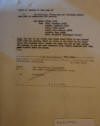
|
3.
21 July 1931.
Report of Contact at Rama, District
Commander Capt.
Fred Riewe, Rama, District of
Siquia, to Col. C. A. Wynn, Bluefields,
p. 3.
[digital copy too
blurry to read]
|
|
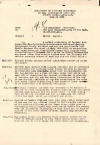
|
1.
21 July 1931.
Patrol Report, from Department Commander
Capt. O. A.
Inman, Puerto Cabezas, to Area
Commander Col. C. A. Wynn, Bluefields,
p. 1.
"From: The
Department Commander, ¶ To: The Area
Commander, Area of the East, ¶
Bluefields, Nic. ¶ Subject: Patrol
Report. ¶ 1.- A patrol consisting of
Captain O.A. Inman, 2nd. Lieut. Theodore
M. Stephenson, 2nd. Lieut. Jacinto
Montenegro, twenty enlisted men and one
practicante left Puerto Cabezas the
night of July 13th. 1931 to reconnoiter
the Wanks River and investigate rumors
that bandits were concentrating at
Waspock for a drive on Puerto Cabezas.
The equipment other than service rifles
were two Thompson sub-machine guns. The
events of each day are set forth below:
¶ Jul. 13.- Cleared Puerto Cabezas
aboard U.S.S. “Sacramento” at 12:00
mid-night. ¶ Jul. 14.- Arrived Cape
Gracias 7:30 a.m. and enlisted aid of
civilians in repairing and equipping
water transportation to proceed up
river. The only available motor boat
transportation was the tug Baldwin and a
four cylinder motor boat which had been
out of commission for several months.
Due to scarcity of gasoline and oil and
the heavy consumption of the tug it was
thought advisable to try and
recommission the motor boat which, after
twenty four hours constant labor proved
to be impossible with material
available. ¶ Jul. 15.- Additional
gasoline and what was presumed to be
sufficient lub. Oil to reach Waspock was
finally obtained and the patrol cleared
Cape Gracias for the upper river at 2215
taking five additional enlisted men and
one BAR, also the master of the tug Hugh
Fagot, an engineer and pilot. ¶ Jul.
16.- Arrived at Saklin 1730 and went
into camp with a detachment of ten men
and one officer placed in the town. The
Indians at the various villages on the
lower river would give no information
but appeared restless. At Saklin the
people over did themselves in assuring
us that there was no sign of bandits on
the river above us which immediately
aroused my suspicion. ¶ Jul. 17.- Tug
engine broke down several times. Cleared
Saklin for up river at 0910. Attempted
to send flank patrol along river bank
but due to heavy rains the river trail
was impassable. [...]"
|
|
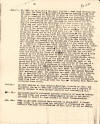
|
2.
21 July 1931.
Patrol Report, from Department Commander
Capt. O. A.
Inman, Puerto Cabezas, to Area
Commander Col. C. A. Wynn, Bluefields,
p. 2.
"[...] Jul. 17.-
At 1300 one mile below Kisalaya sighted
a boat with several men put into the
bank in a suspicious manner. On passing
found four pit-pans drawn up to bank but
no sign of the occupants. Proceeded on
to Kisalaya but natives disclaimed any
knowledge of the boats having passed.
This information we knew was false. Took
four of the Indians and two pit-pans to
bring boats out to the Tug for
examination. On returning found that
boats had gotten under way and gone down
river. About a mile further down stream
and about three hundred yards above the
village of Warbam sighted two of the
boats pulled under the dense foliage on
the bank of the river. The Tug was
slowed down and the Indians ordered to
bring the boats out to the tug for
inspection. As the pit-pans left the
side of the tug heavy fire was opened on
us from both sides of the river. The
fire was promptly returned raking the
dense foliage thoroughly. No target was
visible. The contact was made at 1415
and lasted four minutes. The fire from
the bandits was promptly silenced. The
tug proceeded down the river and landed
a patrol of fifteen men under Lieutenant
Stephenson with orders to proceed back
up stream and attempt to gain contact
with bandits while the Tug patrolled the
river. Lieutenant Stephenson’s patrol
returned o the boat at 1810 and reported
two contacts with the bandits. The first
at Waspam and the second about a mile
further up the river. The last contact
resulted in a complete scattering of
bandits throughout the heavy underbrush.
The patrol also inspected the scene of
the ambush and reported that the bandits
had lost three dead and three wounded.
The jefe of the group was seen by the
Patrol leader and several of the men at
a distance of two hundred yards. He is
reported to be about five feet ten
inches and to weigh about two hundred
pounds; also that he was apparently
wounded in the left upper arm. The guide
of the group was one Francisco Ellis,
the same negro who guided Blandon into
Logtown. At 1815 the engineer reported
that we were running low on gasoline and
that there was hardly enough lubricating
oil to reach Cape. Lieut. Montenegro who
had been wounded in both arms during the
first contact was in severe pain and
exceedingly weak from loss of blood. At
1830 the tug got underway from Ulwas and
proceeded down river. ¶ Jul. 18.- At
0455 arrived at Cape Gracias. Reported
contacts by radio and requested planes
to evacuate Lieut. Montenegro and a
request to Puerto Cabezas to ship up
more gasoline and lubricating oil. ¶
Jul. 19.- Airplane reports indicated
possible presence of bandits between the
Coco river and Puerto Cabezas. Radioed
orders to 1st. Lieut. Livonski to report
to Cape Gracias on first transportation.
¶ Jul. 20.- -0900 Lt. Livonski arrived
Cape Gracias in plane. 0915I turned over
patrol to Lt. Livonski and returned to
Pto. Cabezas via plane making a thorough
reconnaissance of Coco river as far as
Saklin.[...]"
|
|
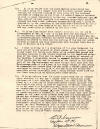
|
3.
21 July 1931.
Patrol Report, from Department Commander
Capt. O. A.
Inman, Puerto Cabezas, to Area
Commander Col. C. A. Wynn, Bluefields,
p. 3.
"[...] 2.-- It is
my belief that the bandit group
encountered was the first group of a
larger movement directed against Puerto
Cabezas. The complete routing of that
group and the constant presence of
airplanes on the river for several days,
is believed to have at least temporarily
halted any intended movement against
this port. It is very possible that
another group still remains between the
Coco river and Puerto Cabezas. Should
such a group be located it is the
intention of the Department Commander to
utilize the patrol at Cabo Gracias to
get behind the group and cut off any
possibility of retreat up the Coco
river. ¶ 3.- It is my firm belief that
Adolpho Cockburn and one Slate
(Comandante at Saklin) are in league
with the bandits. According to
information from Indian messenger of the
bandits who was intercepted. Adolpho
Cockburn and Slate received a message
from the bandits delivered by this man
the morning of the day our patrol
arrived in Saklin and when questioned
both claimed there was no sign of
Bandits on the River. ¶ 4.- I wish to
bring to the attention of the Area
Commander the cool and efficient conduct
of every member of the patrol,
especially under the trying conditions
of an ambush. The prompt and accurate
response to all orders resulted in the
immediate silencing of the enemy fire
and the death or wounding of several of
the bandits. I especially desire to
commend 2nd. Lieutenant Jacinto
Montenegro who was in command of the
detail on the after part of the tug.
Montenegro was shot through both arms
from the Honduranean side of the river
in the early stages of the action. He
concealed his wounds from his men under
a rubber poncho and continued to direct
the fire of his men until the action was
over. This action especially from a
young officer under fire for the first
time, is, in my opinion, very
commendable. ¶ 5.- It is my opinion that
the group encountered was an advance
group clearing the way for a larger body
to follow. All large pit-pans and boats
from Kum to Waspock have been taken up
the river to the vicinity of Bocay.
Persistent rumors indicate that the
bandits are badly in need of supplies
especially salt, and it is believed that
desperation will cause them to make a
raid on Cape Gracias or one of the line
commissaries. If their plans were to hit
Puerto Cabezas in force I believe they
have been, at least , temporarily
checked. It is very possible that some
still remain to the lower river between
Sawa Boom and Kisalaya. Airplanes are
endeavoring to locate them. A new road
has been cut from Saklin to Sawa boom at
which point the main trail from Honduras
meets the Coco River. Whether they
expect to get reinforcements, supplies
or both from Honduras is not known. The
patrol has been temporarily left at Cape
Gracias for rapid movement up the river
in case the planes locate any groups,
also to get behind any groups that might
attempt a movement from the river
towards Puerto Cabezas. (signed) A.O.
Inman, Captain G.N., Department
Commander."
|
|
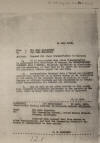
|
21 July
1931.
Request for plane transportation to
Managua, Col. C.
A. Wynn, Bluefields, to Jefe
Director GN, Managua.
Request for
Monseñor Sola y Farrel, Vicariato
Apostólico de Bluefields.
"Reverendisimo Monseñor Sola y Farrel
has recently arrived from Spain and is
in direct charge of the activities of
his church on the Atlantic Coast.
He desires to visit Managua on official
business and has requested me to obtain
plane transportation for himself and
secretary. ¶ He, as well as
the other priests on this coast, have
rendered considerable assistance to the
guardia in the past, and it is hoped
that his request will be approved."
|
|
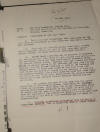
|
1.
22 July 1931.
Conditions on the East Coast, Area
Commander Col. C.
A. Wynn, Bluefields, to Jefe
Director GN, Managua, p. 1.
"1. There are
many indications that conditions on the
East Coast are gradually getting worse
and that bandit activity will increase.
¶ 2. There are two distinct groups
from which trouble may be expected.
First, the more or less organized bandit
groups; second, the large number of
unemployed laborers. ¶ 3.
Actual bandit activity may be expected
to increase for the reason that this
Coast is well stocked with merchandise
and provisions. There are many
commissaries scattered along the several
rivers, which, together with the Chinese
and other stores at various points in
the interior are easy prey for the
bandits. With the evident shortage of
food in the Northern and Central Areas,
it seems most probable that this Coast
will soon become the source of supply
for the bandits, if such has not already
happened. The recent raids on Wuani and
Siuna tends to bear this out. These
raids alone netted the bandits between
twenty and thirty thousand dollars worth
of merchandise and provisions. ¶
4. The present strength of this Area
does not permit protection of the
isolated places. Practically all
transportation is via water, there being
few trails, especially those running
North-South. Distances on the Coast are
great and it is usually several days to
a week before a word is received from
the interior of the presence of bandits.
Guardia operations are hindered by the
lack of both communication and means of
transportation. ¶ 5.
Internal trouble may be expected from
the groups of unemployed laborers. This
is especially true at Puerto Cabezas,
..."
|
|
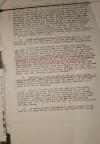
|
2.
22 July 1931.
Conditions on the East Coast, Area
Commander Col. C.
A. Wynn, Bluefields, to Jefe
Director GN, Managua, p. 2.
"... Bluefields
along the banana Rivera [sic] The only
fruit companies now taking fruit from
the Coast are the Standard Fruit Company
at Puerto Cabezas and the United Fruit
Company at Bluefields. Both of
these companies are limiting their
purchases to those from their own farms
and the private farms with which they
have contracts. The independent
growers have not been able to sell any
fruit for two months and there is no
indication that this condition will
improve in the near future as the
Independent Companies which bought and
shipped fruit in the past have withdrawn
from the Coast. This leaves
several hundreds of growers and laborers
without any means of livelihood.
There is no employment to be obtained
elsewhere. Both the Standard Fruit
and United Fruit Companies have recently
reduced their personnel. This is
especially true at Puerto Cabezas where
a large number of men were thrown out of
work. ¶ 6. These unemployed
laborers must live. Most of them
are willing to work but when there is no
work available they will undoubtedly
join the bandits or commit robberies
independently. ¶ 7. There
were some hundred and thirty five
laborers employed on the Rama-Managua
Road just outside of Rama. These
men gave no trouble so long as they
received pay for their work. When
the Government took over this project
recently there was immediately apparent
a feeling of discontent. This
feeling burst into mutiny Sunday night,
July 19th when it became known that the
Government had ordered work on the road
to cease, and discharged the laborers
without pay. The attack on the
Guardia post at Rama resulted. The
Jefe Politico has just informed me that
the Government has supplied the funds
with which to pay these laborers the
amounts due them. This will have a
tendency to quiet them temporarily but
as soon as their money is gone, and
being without work, they will probably
cause more trouble. ¶ 8.
Throught the entire Eastern Area are
many Sandino sympathizers and this is
especially true in Bluefields and Puerto
Cabezas. Should the Guardia at
these two places, at any time, be
reduced below effective strength,
internal disorders on a large scale may
be expected. ..."
|
|
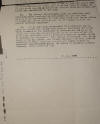
|
3.
22 July 1931.
Conditions on the East Coast, Area
Commander Col. C.
A. Wynn, Bluefields, to Jefe
Director GN, Managua, p. 3.
|
|
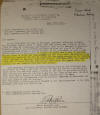
|
24 July
1931.
Contact Report,
1st Sgt. Victor Perera GN, to
Department Commander Capt. O. A. Inman,
Puerto Cabezas.
"DEPARTMENT OF
NORTHERN BLUEFIELDS ¶ GUARDIA NACIONAL
DE NICARAGUA ¶ NEPTUNE MINE NICARAGUA. ¶
July 24th., 1931. ¶ To: First Sergeant,
Victor Porera. G.N. The Area commander,
Bluefields Nic. Dept. Commander, Puerto
Cabezas Nic. ¶ Acct.: report. ¶ On the
14th. Date of July at 8:00 a.m. Sergeant
Silvestre Colomer, Guardia Nacional,
took a trip to (Siuna?) Cuina with two
guides, and returned on the (--) date of
July at 11:00 a.m.., and reported that
on his arrival at Cuina, he immediately
gathered the following information, from
the people at Cuina. The information was
given to him a follows: on the 29th. Dae
of June a band of bandits arrived at
Cuina, about a hundred & thirty men,
headed by Abraham Rivera, they went to
Cuina and Wany, robbed all the china-men
merchandise from the stores, also
murdered two men at Cuina, and two badly
wounded by the outlaws so they informed
to Sergeant Silvestre Colomer G.N., that
after the bandits went away, two of
their men was left in the town, which
the people from the town killed the two
bandits that was left behind. ¶ Also
Sergeant Silvestre Colomer reported that
on the following day of his arrival at
Ciuna, a man went to where he was, and
greeted him, and about (--) hours after
the man went away, a fellow by the name
of Mr. Roals, informed (--) that the man
who greeted him was a spy for the
bandits , and also informed (--) that
there was a number of fifty-eight
bandits, still at Wany. After he
received the information from Mr. Roals,
he immediately proceeded for Neptune
Mine. Arrive safe at Neptune. Sergeant
Silvesstre Colomer, was well treated by
the Superinendent of the Mine. (--)
proceeds this date for Bluefields. ¶
Copy. Area Commander, Bluefields Nic. ¶
Dept Commander, Puerto Cabezas Nic. ¶
(signed) Victor Perera, ¶ First Sergeant
G.N.¶ N.C.O. In charge Neptune Mine
Detach."
|
|
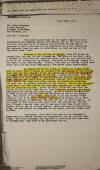
|
1.
25 July 1931.
Letter from "FFM"
to Mr. John Brownson, Acting
Manager, Foreign Dept., New Orleans LA,
p. 1.
NOTE:
This document also appears in the
TOP 100, PAGE 71.
"Dear Mr. Brownson: ¶ The
bandit activities in the upper regions
of the Prinzapolka and Bambana Rivers
just before and at the time of my visit
on both may be of interest, and herewith
follows what I gathered on both from
some of the residents and a few others
who had returned from the seat of
activities, as well as one or two
fugitives whom I met. ¶
Getting to the village of Tungla, some
115 miles up-stream from the sea, on the
Prinzapolka, the noon of the 3rd. Inst.,
I decided to look over the immediate
back lands in the vicinity and so we (I
was accompanied by Messrs. Donaldson and
Leeming) camped in a hut about a mile
down-stream. Friday, Saturday and Sunday
nights were spent here and the three
following a few miles lower down-stream.
¶ On coming out of the woods at
Tungla on Sunday afternoon at about four
o’clock, we learned from the people of
the village that news had been brought
in by the first one of five men
belonging to Tungla who had left Siuna
on the 3rd., coming overland, that
bandits numbering from eighty to
one-hundred-and twenty, including some
Wanki Indians had eight days previously
visited that town and also Uani, raided
the shops and other places, destroyed
one building and were bent on general
destruction and murder. Two of the
village’s inhabitants had been killed
and one badly chopped up – this last was
not expected to live. After the main
force had left with the spoils of their
raid, some few of them returned to
Siuna, got drunk and started to molest
the women folk, and as a result of which
two of them (bandits) were killed with
machetes by two of the Tungla men. The
others of this small gang left to go and
consult their leaders, said to be Ramon
Rivera – Caracas and others, as to what
reprisals should be taken for the loss
of two of their number. It was reported
more than a week later that the bandits
had visited this village a second time,
and it was said that they would visit
Tungla, but as far as I could gather,
there had been no further killings, or
destruction of property to the place,
nor had Tungla been visited. ¶
Curiously, it is said that one of the
Chinamen’s shops was not cleared out and
it was apparently left to continue
business. The other Chinamen are
reported to have fled and come down to
Prinzapolka; some five to my knowledge
did so. ..."
|
|
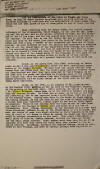
|
2.
25 July 1931.
Letter from "FFM"
to Mr. John Brownson, Acting
Manager, Foreign Dept., New Orleans LA,
p. 2.
"... All
the inhabitants of the river at Tungla
and lower down, as well as those further
up-stream were greatly worried at the
reported killings of civilians and the
molestation of their women folk, which
did not take place in any of those parts
on any of their previous raids. ¶
When returning down the Yauya Creek, the
second largest tributary of the
Prinzapolka, below Tungla, on the 15th
we (Mr. Leeming and the writer) met an
old miner, Peterson by name, who was
watchman at the La Luz Mine, and who has
passed many years in that part of the
country. He said that he and his family
had had to leave their house and take to
the woods just prior to the bandits’
first visit to Siuna and that a man, a
member of his household had been one of
those killed. He also informed me that
the bandits had apparently a complete
list of all the inhabitants of any
importance both foreign and native in
the surrounding country, and that he
understood that none of these were to be
spared if they got into the hands of the
bandits. He mentioned that most of the
inhabitants of the villages in that part
of the country had been seeking refuge
hidden in woods as it was claimed that
the bandits were bent on a general
destruction of both life and property.
¶ Later, on the above data (the
15th) returning to Tasbapowni we met a
man called Lawrence, about the most
intelligent negro member of the Tungla
village. He said that the latest reports
from around Uani and Siuna were that the
bandit gang numbered between three and
four-hundred and that they were expected
to visit Tungla; so he had fled with his
goods and chattels as likewise many of
the others, and I might say, that the
exodus from this village commenced on
the Sunday afternoon that we first
learnt of the first raid on the two
towns above mentioned. ¶
Later, on the 17th, I, in company of Mr.
Leeming went up the Bambana River
getting as far up this as the Walpatera
Rapids, on the morning of the 18th inst.
While enroute, we called in to see a Mr.
Albert Kirkland, whose home is at the
junction between the Banacruz and
Bambana Rivers. We found him at home, as
he had on the Tuesday previously, due to
the reported bandit activities, left his
post at the Neptune Mine. Having once
been in the hands of these people and
having escaped, he did not wish to run
the risk of being captured a second time
and, therefore, wished to get as far out
of their reach as possible. While on his
journey from the mine he had to pass
Tuesday night in the village of Tunkey
some 145 miles from the sea at
Prinzapolka. Next morning, Wednesday, he
was informed by his host that three
strangers; unknown to any of the
inhabitants of the villages, had made
the rounds of same that night winding up
their inspection by sitting in front of
the house in which he passed the night
and were overheard in subdued
conversation by his host. That night
(Wednesday) a small party of bandits,
number unknown, visited the town and
raided the few small shops therein.
Their number must have been few as it is
reported that loot they could not carry
away they strewed in the so called
streets. Curiously, likewise the Neptune
Bodega, which is situated at this
village, and said to contain perhaps
some $4,000.00 in ..."
|
|
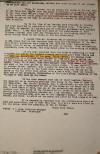
|
3.
25 July 1931.
Letter from "FFM"
to Mr. John Brownson, Acting
Manager, Foreign Dept., New Orleans LA,
p. 3.
"...
merchandise was not destroyed, neither
was there damage to any property of life
there. ¶ This, of course,
was my reason for going no further than
to the Walpatera Rapids some two hours
from Tunkey, or roughly 15 miles. It was
also reported that many of the
inhabitants of Tunkey had taken to the
woods and other people of the
surrounding country had come down-stream
to get as far away as possible from the
center of activities in this district.
¶ Up to the time of my leaving
this vicinity no trouble had been
reported in connection with the Neptune
Mine. This mine, I am told, is guarded
(10 Guardia and 25 civilian guardsmen
with machine guns, etc.). I may also say
that some of the shopkeepers of this
village (Tunkey) also left for
Prinzapolka on the morning after the
raid; having taken to the woods on the
day previously. ¶ I learnt
from Mr. Kirkland while spending
Saturday night in his house that he had
received news from the storekeeper of
the Neptune Mine’s storeroom that
bandits had left for their headquarters,
Bocay, with 18 boats, 12 mules and 30
head of cattle. This information,
apparently from the mines, was
dispatched prior to the raiding of
Tunkey. ¶ It was also
reported that the bandits operating in
this vicinity and led by the leaders
already mentioned plus some others and
the Official Executioner of the gang,
Julio Castro, are making their
headquarters in a village being formed
by them at a place called Asa, at the
junction of Uli and Asa Rivers, both
tributaries of the Prinzapolka. Here, it
is said, they have amongst them both
women and children and much of the loot
gotten in their recent raids. It was
reported, or perhaps better rumored,
that a party of bandits had left for
their headquarters at Bocay on the Wanks
River where they can easily get by going
up the Uli River from which, with a
day’s walk, they can connect with one of
the principle tributaries of the river
Bocay, emptying a the village of this
name on the Wanks. ¶ It was
also rumored that one of their leaders,
Pedron, was supposed to be crossing
overland from Bocay to the town of Rama
on the Escondido. The leader, Caracas,
was, I understand, at one time and not
so long ago a timekeeper of one of the
Farms on the Vance Tract and who, I have
heard it said, was one of the principle
men mixed up in the trouble that took
place in the district in the raids of
April past. Shortly after the occurrence
alluded to, I am informed, that he
passed through the Neptune Mine with two
of the Company’s mules. One he left
behind, and which is still at the mine;
the other he took along with him.
¶ It is generally reported that
the bandits were short of arms and
ammunition, and to bear this out, that
not a shot was fired in all the raids,
with the exception of two at Tunkey.
¶ Yours very truly, ¶
Actg. Division Manager ¶
(written) Nicaragua ¶ FFM"
|
|
|
|
|
PREVIOUS
NEXT |
|
|
|
|
|
|
|

